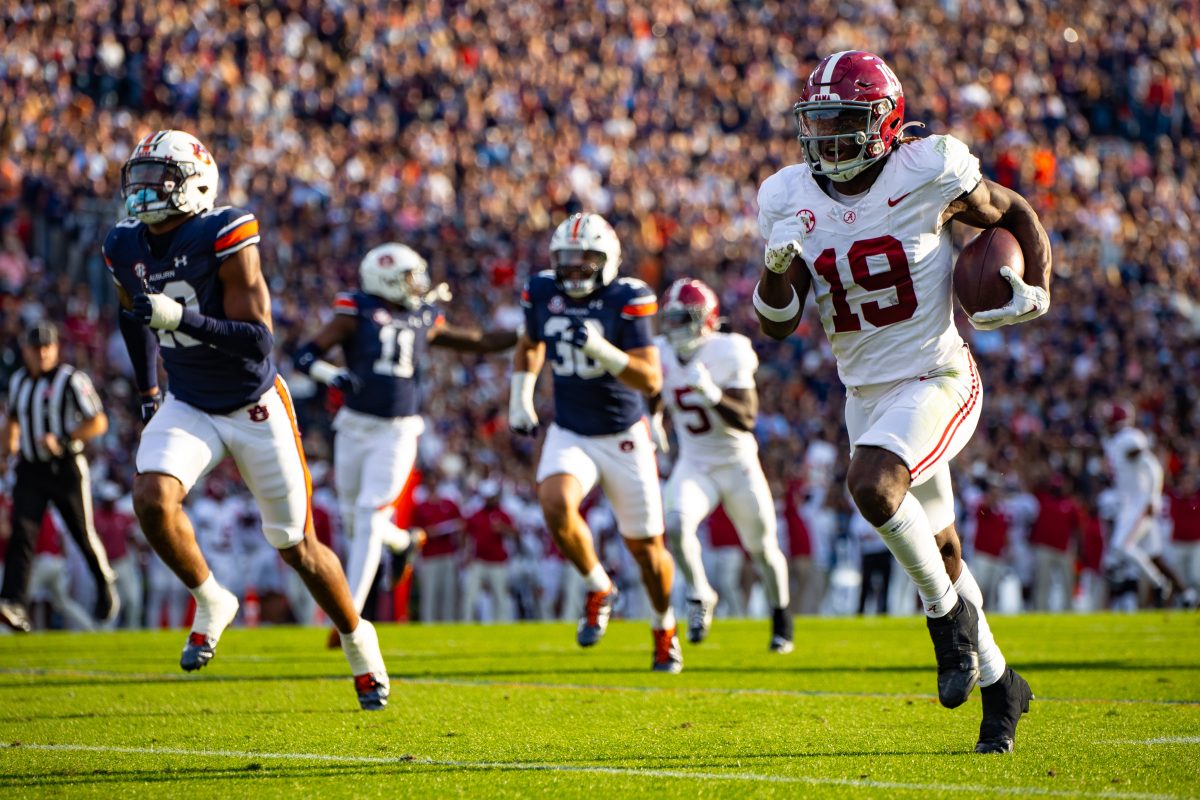Texas and Oklahoma, two archrivals who were previously in the Big 12 conference, share one of the most intense rivalries in college sports and possibly college football as a whole: the Red River Rivalry.
The Red River Rivalry adds to a list of storied SEC rivalries, including the Egg Bowl between Mississippi State and Ole Miss; the “World’s Largest Outdoor Cocktail Party” between Georgia and Florida; the “Deep South’s Oldest Rivalry” between Auburn and Georgia; and, most notably for Crimson Tide fans, the Iron Bowl between Alabama and Auburn.
While the Red River Rivalry is among some of the most heated rivalries in college football, it does not top the Iron Bowl.
Magnitude
The Iron Bowl simply matters more. High stakes in terms of the postseason are a consistent factor in the rivalry week matchup.
In the last 15 seasons, the winner of the Iron Bowl has gone on to advance to the SEC Championship 12 times. The three times this did not occur were when LSU won the West Division in 2011, 2019 and 2022.
During the 21st century, the Iron Bowl has also given an insight into who plays in the National Championship.
In a five-year stretch from 2009-2013, the winner of the Iron Bowl advanced to the Bowl Championship Series National Championship. The only time within that stretch in which the Iron Bowl winner did not win the BCS National Championship was in 2013.
Comparatively, neither member of the Red River Rivalry has made an appearance at the national championship since 2005, when Texas beat USC in the title game.
The Iron Bowl has produced 23 national championships, while the Red River Rivalry has only produced a combined total of 11.
Venue
Home-field advantage can contribute to upsets. When paired with an already-fierce rivalry game, the stakes are enormously high. In spite of this high-stake potential, Texas and Oklahoma have been playing at the neutral site Texas State Fair in Dallas, Texas, since 1923.
While the pageantry and environment of the Red River Rivalry make for an enthusiastic showdown, neither team has had to endure the pressures of playing in front of a crowd completely in favor of the opposing team.
Until the late 1990s, the Iron Bowl was played at a neutral site in Birmingham. Since 1997, however, the two schools have alternated playing at the opposition’s home field.
Playing at a rival’s stadium presents a challenge that Texas and Oklahoma have never experienced in their rivalry.
Moreover, the historic moments in the Iron Bowl have given college football fans crowd reactions that will live on forever in college football history. Reactions resulting from the 2013 Kick Six and the 2023 “4th and 31” are only possible with a home-field environment.
Viewership
It is no secret that the more hyped-up and consequential games get, the higher the ratings are on a week-to-week basis. Regardless of the year and the rosters, the Iron Bowl is always placed into a prime slot in the final week of the regular season.
On top of the consistent factor of high stakes in the Iron Bowl, it is also a highly consequential game each year.
More people continue to tune into the Iron Bowl than into The Red River Rivalry. The Iron Bowl has consistently produced higher viewership than the Red River Rivalry over the last five seasons.
The most recent time the Red River Rivalry drew more viewers than the Iron Bowl was in 2018, when 10.2 million people tuned into Texas-Oklahoma compared to 9.1 million viewers that watched Alabama-Auburn.
The in-state factor
One thing that makes the Iron Bowl so intense and that the Red River Rivalry lacks is that the former is between two teams in the same state.
Alabama and Auburn fans living in the state are forced to live in relatively close quarters. In daily life, fans of both sides see each other at the grocery store, on the road or even on the same street in a neighborhood.
Fans wait for the final week of the college football regular season every year to see which side gets state bragging rights for the next 365 days.
The Red River Rivalry does not have that same fan dynamic. Because of the number of power conference football programs in Texas, such as Texas A&M, TCU and Baylor, there are no state bragging right claims for Texas or Oklahoma.
While Texas and Oklahoma fans also wait the 365 days to meet at the Texas State Fair, it is certainly not to a scale of the Iron Bowl due to the amount of competing top programs in the states of Texas and Oklahoma.
The debate of these two rivalries will continue to be fascinating to watch as the landscape of college football continues to change. While the addition of the Red River Rivalry into the SEC is exciting, the Iron Bowl reigns supreme.









